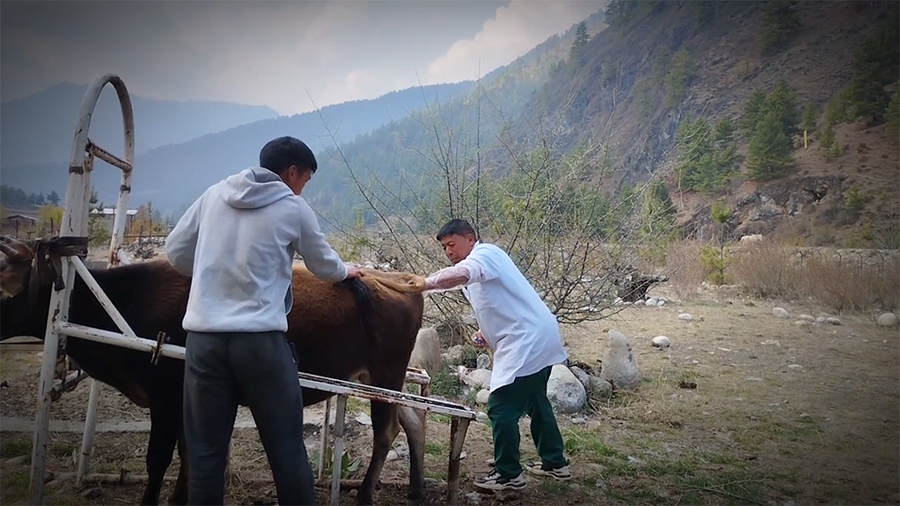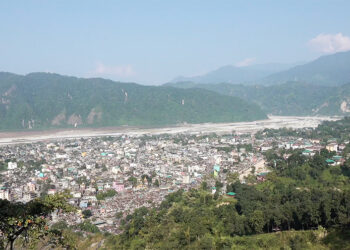
In Haa, people are now choosing to artificially inseminate their cows over natural breeding. This is particularly gaining popularity in Katsho Gewog where most of the farmers have now stopped raising breeding bulls. The Gewog Livestock Extension office is also encouraging farmers to take up the new fertility treatment method. So far, over 1000 cows have been inseminated out of which around 700 of them have been successful according to preliminary reports.
Sangay Dorji, the Gewog Livestock Extension supervisor is pouring liquid nitrogen in a cryogenic storage container which will store the semen. He then puts the frozen semen in the container. He is heading to Bali-Mombitshokha Chiwog today where a farmer has asked to artificially inseminate his cow. As he is the only Artificial Insemination specialist in the Gewog, he remains busy most of the time. Sometimes, he has to walk for hours to provide door-to-door services to the farmers.
“There are some places where we have to travel for 20 to 25 kilometers, in such cases we have to go in their areas to provide artificial insemination. We have given some basic training to farmers about artificial insemination. We have also given our contact numbers, so as soon as we get a call, we fix timing and go there to provide our service,” said Sangay Dorji.
People said that artificial insemination has various advantages over natural breeding bulls, producing highbred calf and increasing the production of cattle. According to livestock officials, the method will also help in stopping the spread of any livestock-related diseases. Moreover, farmers do not have to waste their resources in taking care of breeding bulls.
Mindu Tshering a beneficiary of the service from Bali-Mombitshokha Chiwog said that if they use breeding bulls for breeding, the probability of a cow giving birth to bull and heifer calves is equal.
“However, in my case, with artificial insemination, all of my cows bore heifer calves, which is always advantageous as a farmer. Moreover, artificial insemination is reliable unlike breeding bulls which have to be constantly looked after.”
Similarly, Dorji Wangchuk who is also from Bali-Mombitshokha Chiwog said that it was challenging to find bulls for breeding in the past.
“Now we can have artificial insemination which is available at any time. I have two calves bred through the method.”
People living within five kilometers from Gewog livestock center are encouraged to bring their cattle to the center for artificial insemination. However, the livestock office provides free services to farmers living far-flung villages.
Meanwhile, farm mechanisation has also influenced farmers in losing interest in raising bulls.
Tshewang, Haa
Edited by Kipchu









